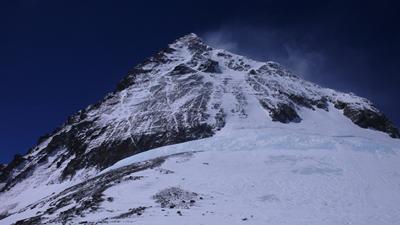Southampton scientists mark 10 years since reaching Everest summit

On 23 May 2007 at the summit of Mount Everest a small team of exhausted Southampton doctors and scientists jabbed their own femoral arteries to take blood samples, sparking a decade of ground-breaking discoveries of how low oxygen levels affect the body.
Ten years on, this pioneering endeavour has enhanced our understanding of life-threatening trauma and critical illness, how humans adapt to life at high altitude and led to new approaches to intensive care.
One in five people in the UK end up in intensive care at some point and, of those, 25-30 per cent die, with lack of oxygen, or hypoxia, a major contributory factor.
Reducing those deaths has been the main aim of the Caudwell Xtreme Everest, an international collaboration between the University of Southampton, University College London and Duke University in the USA, by using the oxygen-thin air of the Himalayas to simulate hypoxia.
During the extreme altitude expeditions, the team of intensive care doctors, nurses and scientists from Southampton and London have conducted experiments on themselves, identical twins, children and the Sherpa people.
Involvement of twins with identical genetics has helped identify non-genetic reasons for differing responses to low oxygen between two people, whilst involving children has given insights into how paediatric patients handle low oxygen. Studying the genetics and physiology of Sherpas, a people that have lived in the Himalayas for centuries, has helped identify ways that they have adapted to chronic low oxygen – helping explain differences to lowland peoples, and identifying targets for low oxygen therapy.
Some of the most prominent results, radically changing research into how oxygen is used to support critically ill patients, are based on arterial blood samples taken by the 2007 team from themselves, just after reaching the summit and fighting their own dangerous hypoxia.
Since then the process of analysing hundreds of thousands of samples has yielded many more insights, including effects of hypoxia on the brain and dementia, with the flow of discoveries set to continue for some time yet. This year will see several in-press articles covering a range of subjects, including how lowlanders adapt to altitude over time and how oxygen is used by the body in hypoxia.
The latest paper, published in Proceedings of National Academy of Sciences (PNAS), shows how Sherpas have evolved to become superhuman mountain climbers, extremely efficient at producing the energy to power their bodies even when oxygen is scarce. The study found that Sherpas’ mitochondria (found in cells) were more efficient at using oxygen to produce ATP, the energy that powers our bodies. The findings could provide valuable insights to explain why some people suffering from hypoxia fare much worse in emergency situations that others, the research team say.
Professor Mike Grocott, Professor of Anaesthesia and Critical Care Medicine at the University of Southampton and Consultant in Critical Care Medicine at University Hospital Southampton, leads the Xtreme Everest collaboration. He said: “The past 10 years of work have greatly advanced our understanding of low-oxygen effects, physiological adaptation and targets for better oxygen therapy.
“The oxygen levels on the summit are a third of those at sea level - similar to those experienced by patients in intensive care, which is why this type of environment gave us an excellent opportunity to conduct vital research.
“We have been extremely fortunate to work with a team of dedicated researchers and volunteers, including the Sherpa community in Nepal, and without them the expeditions would not have taken place.
“The future of Xtreme Everest is really exciting too. We have been able to collect a vast amount of data and we hope to make it more widely available to other research teams. We also hope to create a cohort study, working with our participants to conduct repeat measurements over time to understand the long-term effects of hypoxia on the body.”
To celebrate the 10th anniversary the Xtreme Everest Executive team is putting on two events. The first, Knowledge 10: Oxygen, will be on 23-24 May 2017 at the Royal Society of Medicine (RSM) in conjunction with the RSM Critical Care section. Day 1 focuses on the history of research related to oxygen and altitude, and Day 2 on research results from Xtreme Everest to date. The second event will be a lecture at the Royal Geographical Society on the evening of 23 May 2017, the tenth anniversary of Xtreme Everest’s successful summit.
